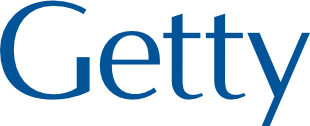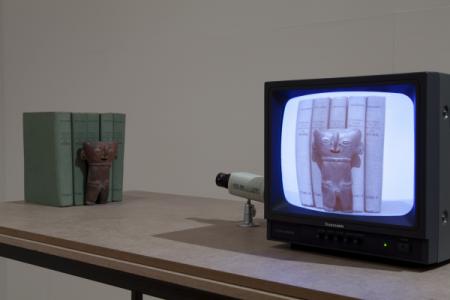5th Transregional Academy on Latin American Art - Contesting Objects: Sites, Narratives, Contexts
DFK hors les murs
5th Transregional Academy on Latin American Art - Contesting Objects: Sites, Narratives, Contexts
May 4 – May 12, 2024
Museo de Arte de Lima (MALI)
/ The program has been modified – find the actual program as a pdf on the right /
The Academy is organized by the German Center for Art History (DFK Paris, Max Weber Foundation), the Bibliotheca Hertziana – Max Planck Institute for Art History in Rome (BHMPI), and the Museo de Arte de Lima (MALI), in cooperation with the Forum Transregionale Studien (Berlin). The Academy is made possible with support from Getty through its Connecting Art Histories Initiative.
This is the fifth transregional academy organized by the DFK since launching its initiative “Travelling Art Histories” in 2016 and the first to take place inside a museum: the Museo de Arte de Lima (MALI).
Rationale
Viewed from a transregional perspective, the relationship between an object and its discursive embedding is influenced not only by history and institutions but also by culture, society, and the region itself. These interconnections call for a situated research and an interdisciplinary approach so that objects are considered in light of their complex contexts: environment, class, gender, race, economy, religion, academia, museum, etc. The term “objects” includes all expressions of the visual arts; however, viewed through the lens of their objecthood, objects are a stage for exploring transcultural references, negotiations, and impositions, raising important questions for a transregional art history. As in the case of pre-Columbian objects, most artifacts transgress modern conceptual categories of art, showing that received notions of art can be performed, imposed or rejected; in fact, their nomination points to the epistemic violence inherent to every history and instance of instrumentalization (musealization, iconization, scientification, narration etc.). These interwoven layers of possible approaches cannot be studied solely from a regional perspective. They are best analyzed by means of relational studies, using a dialogical approach focusing more on interconnectedness than on comparison. The theme, “Contesting Objects: Sites, Narratives, Contexts”, therefore, promotes a transregional exploration of the material and intellectual foundations of art historical research: How do different notions of art history bring different objects to light? How does art history identify itself through specific objects? How do certain objects challenge art historical discourses, and when do their presence demand interdisciplinary approaches? And most importantly: how can a transregional perspective with an emphasis on Latin America expand the scope of understanding the links between the object and its art histories in different social, cultural and ideological constellations?
Latin America from a Transregional Perspective
The Academy’s prism and location is Latin America from a transregional perspective. Working outward from there, artistic processes of exchange within the American continent will be analyzed from a transregional and transcultural perspective against the backdrop of the concurrent international entanglements and connections. Instead of merely describing and comparing artistic tendencies, the interconnectedness and the multitude of cultural and creative processes and strategies of appropriation, including contradictory modalities of translation and analogy or conflicting, nonlinear transfers, will be discussed. Such a transregional perspective can only be viable if research conducted in or on Latin American countries is brought into dialogue with discussions taking place elsewhere, within an international context, and vice-versa. This relational, dialogical approach forms the foundation of the Academy's methodological framework. In that sense, a historiographical perspective is necessary to gauge the extent to which there can be a common conceptual and epistemological basis. This applies not least to terms such as “translocal,” “transregional,” and “transcultural.”
Contesting objects
Premised on the notion that the question of images also emblematizes important shifts vis-à-vis an art history oriented toward normative concepts of artwork, we ask what the question of objects brings to art history, both in terms of material and intellectual foundations, and especially in view of tangible experiences: How does art history imagine its object and how do objects create different art histories – open or not to transdisciplinary dialogues depending on the diversity of material culture? The historical scope of the Academy’s investigation is deliberately not limited to any one era and seeks to avoid all contemporary historical caesurae. Project descriptions should address one of the following thematic fields:
Sites
Objects are situated items, in that they also refer to diverse notions of space, place or site. Their scale invites us to consider artistic creations outside of institutional spaces like museums and galleries. For instance, how can we consider the aesthetic experience of urban contexts, both verbally and visually? How can we grasp the fragility of sites? And how do notions of inside and outside vary depending on transregional perspectives?
Contexts
While reproductions and presentation of artworks may have accustomed viewers to seeing them depicted without frames or a space surrounding them, the question of objects inevitably brings a complex ecosystem into play – an environment that is more permeable to societies and cultures surrounding them, and thus different from that of the white cube, for example. The focus is, thus, on the social and historical components that are indissolubly part of every object’s biography, both with regard to the context of their production and their reception. How do we reflect on these lived situations?
Display
Objects can be mobile. While some objects disappear or endure transregional encounters, others are rendered all the more visible. This dynamic engenders narratives that are conditioned both at the regional and transregional levels. How do we engage with these exposed objects? How do we react to the presence and absence of objects and their histories? How do we name them?
Agency
Objects are more than mere things: they are linked to narratives and have an agency on their own. Therefore, they may offer a critical counterpoint to abstract concepts and narrations, or be tamed by them; they may seem suitable for both critical and theoretical inquiries as well as positivist approaches. How can we discuss these different concepts of agency and their historiographic contexts?
Sensual approach
Objects appeal to a variety of senses, oftentimes challenging academic research, as they engage the researcher’s bodily experiences. This provides an intriguing counterpoint to the colonial obsession with visibility, for instance, in the context of modernism. How does art history engage with these different domains of the sensible?
History
Each object participates in an intertwining of multiple histories. They allow different approaches stemming from such disciplines as anthropology, political science, history of science, or art history to imagine different takes on how history and objects interact. How can we think of objects in relation to transregional histories without assuming a mere illustration or reflection but without also overestimating the agency of objects in the face of political forces?
Identity
Objects may also be linked to very different conceptions of identity if we think of Amerindian perspectivism, micropolitics or disembodied philosophies. How does art historical research navigate this multitude of concepts? Is it even important or desirable to have a common epistemological basis for how we comprehend objects?
The 5th Transregional Academy on Art and Culture in Latin America will be held as part of the DFK Paris’s research area, “Traveling Art Histories: Transregional Networks in Exchange between Latin America and Europe”. The four preceding Academies addressed the themes of “Modernism: Concepts, Contexts, and Circulation” (São Paulo, 2016), “Mobility: Objects, Materials, Concepts, and Actors in Art” (Buenos Aires, 2017), “Spaces of Art: Concepts and Impacts in and outside Latin America” (Mexico City, 2019), and “Plural temporalities. Theories and Practices of Time” (Bogotá, 2022).
Steering Committee
- Luisa Elena Alcalá, Universidad Autónoma Madrid
- Lena Bader, German Center for Art History (DFK Paris)
- Roberto Conduru, Southern Methodist University, Dallas
- Eduardo Jorge de Oliveira, University of Zurich
- Sharon Lerner, Museo de Arte Lima
- Natalia Majluf, Independent Art Historian
- Mijail Mitrovic, Pontificia Universidad Católica del Perú
- Tristan Weddigen, Bibliotheca Hertziana – Max Planck Institute for Art History Rome
The working languages are English, Spanish, and Portuguese.
For inquiries related to program content, please contact: Lena Bader, DFK Paris, 45 rue des Petits Champs, 75001 Paris, lbader@dfk-paris.org.
For inquiries regarding the organization, please contact: Jacqueline Wagner, Forum Transregionale Studien, Wallotstr. 14, 14193 Berlin, +49-30-89001-430, academies@trafoberlin.de.

The Academy is made possible with support from Getty through its Connecting Art Histories Initiative
For further information on the previous academies and the participating institutions, visit:
- dfk-paris.org
- biblhertz.it
- mali.pe
- getty.edu/projects/connecting-art-histories
- forum-transregionale-studien.de
- academies.hypotheses.org
- maxweberstiftung.de
Beteiligte Kolleg:innen des DFK Paris





